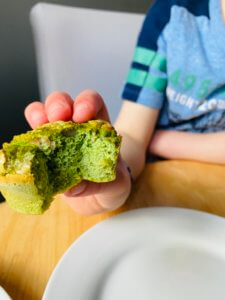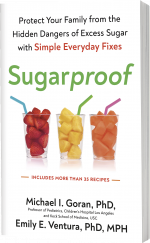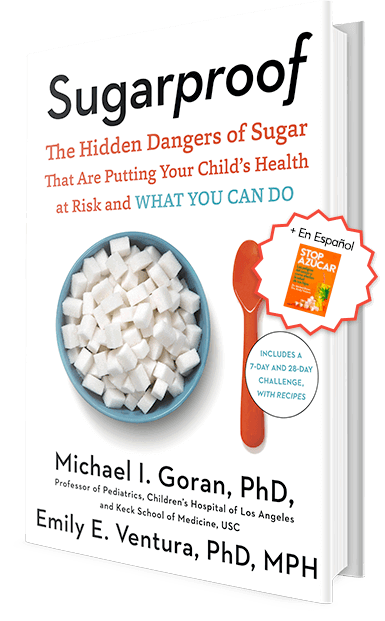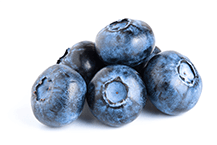Who else feels like their kids are snacking machines these days? Whether your kids are younger like Emily’s two boys, or teenagers like Michaels two girls, they may be always big on snacks but asking for even more of them now that they are at home all day. And let’s be honest, it’s not just the kids. Both of us are finding ourselves hovering in the kitchen looking for snacks more often while working from home.
As we talk about in Sugarproof, we’re all for snacks, and they make up an important part of our overall diet, but we like to be strategic about them. The reality is that most prepacked snacks are not the most healthy: 80% or more have added sugar in them, and typically they also contain other low quality ingredients and preservatives.
Here are seven tips for not only what to offer as snacks in order to avoid extra added sugar, but also how and when to offer them to help your kids stay healthy at home. We are also sharing one of our favorite recipes from the book: Crispy Chickpea Snacks. In the book we provide more tips and ideas as well as recipes for other Sugarproof snacks, both sweet and savory, like chocolate sesame squares, fruit-on-the-top yogurt pots, and tamari-roasted sunflower seeds.
Add Nutritional Value. Popular snack foods marketed to kids like graham crackers, granola bars, and fruit snacks are often high in sugar and other refined carbohydrates and don’t have much nutritional value. We like to think about snacks as a chance to add good things into what you child eats each day rather than just a way to fill up their tummies and tide them over to the next meal. Snacks that include fresh fruits and vegetables are especially good, like apple slices with nut butter or carrot and cucumber slices with hummus.
Involve Kids in the Preparation and Presentation. If kids help prepare their own snacks that contain healthy ingredients, they are more likely to get excited about eating them, and it will become a fun new project that they can go back to the next time they are hungry for a snack. For example, kids can make their own mini Caprese skewers with cherry tomatoes, basil, and mini mozzarella balls (bocconcini) either on regular skewers or on toothpicks for a mini version. Older kids can often make the entire snack themselves from start to finish, and younger children can be useful helpers as well. To increase their enjoyment of the snacks, you can make the presentation fun, such as by cutting vegetables into different shapes, asking kids to arrange them on plates/platters, and serving them with various dips.
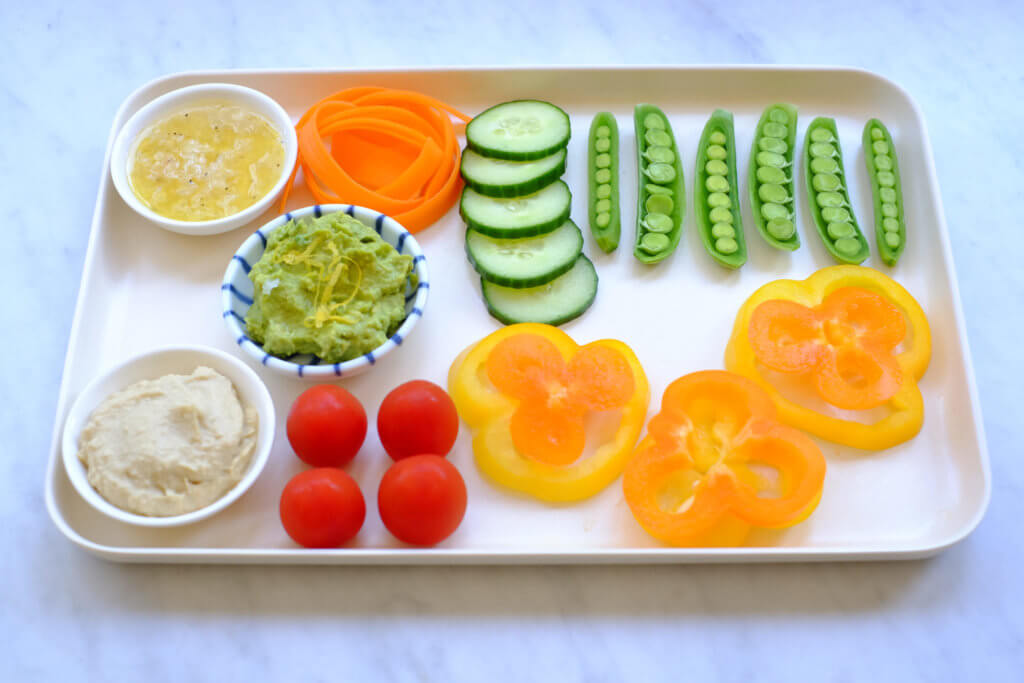
Pair Carbohydrates with Protein. If you are going to serve snacks that are carbohydrate-based, like crackers, try to choose ones that don’t have added sugar, portion them into small servings, and balance them with a source of protein like cheese or nut butter. This helps avoid a big carbohydrate load and helps stabilize blood sugar. Simple carbohydrates on their own raise blood sugar quickly, which leads to a rise in the hormone insulin. An insulin spike ultimately provokes more hunger and can also cause a crash in blood sugar levels and even lead to symptoms like shakiness and irritability. We talk in detail about this cycle in Sugarproof, calling it the “sugar roller coaster,” and give tips on how to keep your child from boarding it. We also provide recipes for homemade crackers, granola bars, and energy bites that are balanced with fiber, protein, and healthy fats.
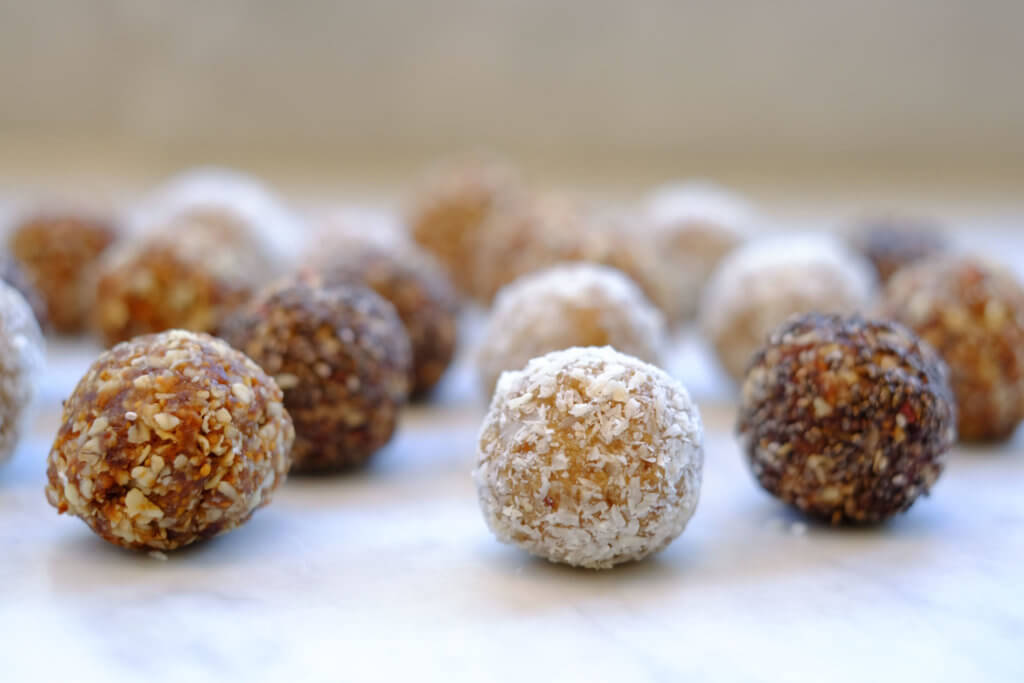
Incorporate Fiber. Another way to help your child stay full and happy for longer is to give a snack that is high in fiber. Whole grains, fruits, vegetables, and legumes all fit the fiber bill. One of Emily’s kids’ favorite snacks is roasted chickpeas. This recipe is in the book, and we’re sharing it here as well. They are very satisfying and provide 4 grams of fiber per serving, which is about 20% of the daily recommendation for a young child. Because they are very tasty, kids often want more than one serving. In fact, they are so popular with Emily’s kids that she makes them once a week and they never seem to get tired of them, especially because there are so many options for seasonings, going from Mexican-inspired with ancho chili, to Indian-inspired with garam masala, to Italian-inspired with rosemary from the garden. Other great high fiber snacks are homemade kale chips or the crispy red cabbage crisps from our book, both of which are very simple to make.
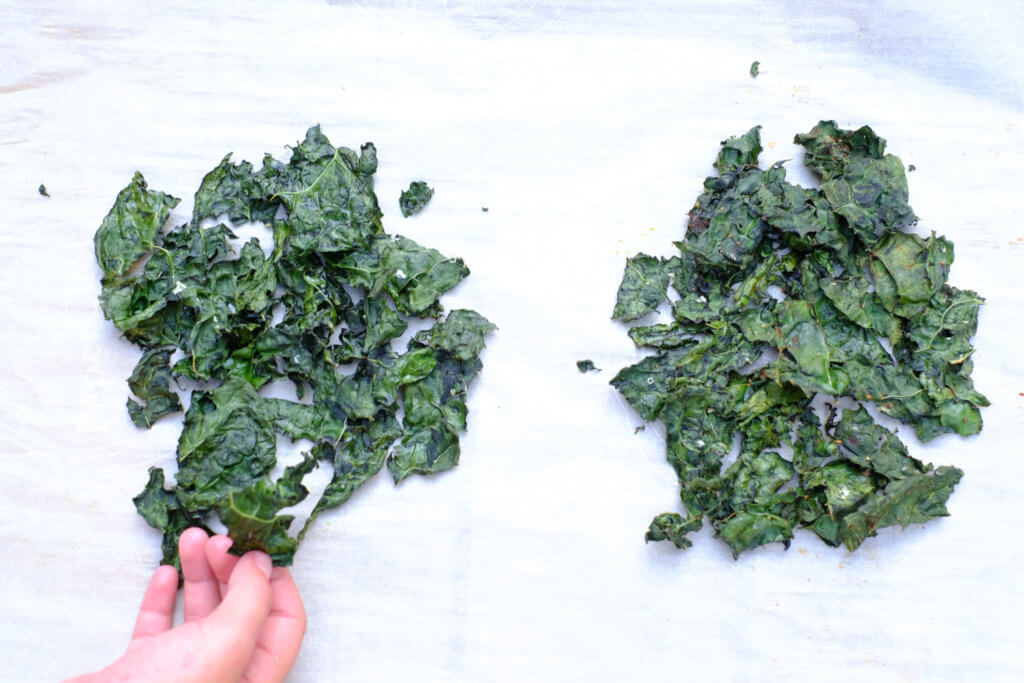
Change from Mindless to Mindful. We all know what happens when we open a package of something like chips or cookies and bring it in front of the TV or ipad. This can be comforting, but ultimately doesn’t leave anyone feeling well. One way to get around this situation is to have snacks in a more mindful way, such as sitting at the dining room table or out in the garden, when everyone is paying more attention to what they are eating and to interacting with each other. If you are going to allow for snack time and screen time to mix, think about putting out something that you don’t mind your kids mindlessly eating a lot of, such as cut raw vegetables with their favorite dip or cut fruit or berries. Having a family movie night with popcorn is fun, and not a problem. Popcorn is actually a high fiber food. Just consider making your own in a pot or with an air popper so you avoid some of the low quality oils and extra salt that come in microwave versions. Adding nutritional yeast as a topping is one way to add extra flavor as well as additional vitamins to popcorn, or you can add many different types of spices or seasonings like we suggest for the crispy chickpeas snacks.
Create a Loose Schedule. When kids are in school,they have a built in snacking schedule. Most kids get a mid-morning break when they have a snack, and then have an afterschool snack as well. This two snack a day routine often gets thrown off when everyone is at home all day, and can lead to constant snacking that gets in the way of kids eating well at meals. If possible, try to create a snack routine while sheltering at home, such as one snack mid-morning, one mid-afternoon, and/or occasionally one in the later evening for kids who eat dinner early and are legitimately hungry again before bed. Within this routine, think strategically about balanced snacks that fill in any nutritional gaps in what your child has eaten that day.
Address Boredom. If you have a loose snack routine in place, and your kids are asking for more snacks at other times, then you can be more confident in knowing that they may want to snack because they are simply bored. This is of course understandable as we are all cooped up and more limited on things to do. When young kids ask for snacks and you know they shouldn’t technically be hungry, you can remind them that the next meal is coming up soon, and propose an activity for them to do instead, such as go play in the garden or build something with Lego. Sometimes offering a glass of water instead in these cases helps, as young kids are often not able to tell when they are hungry vs. thirsty.
Crispy Chickpea Snacks
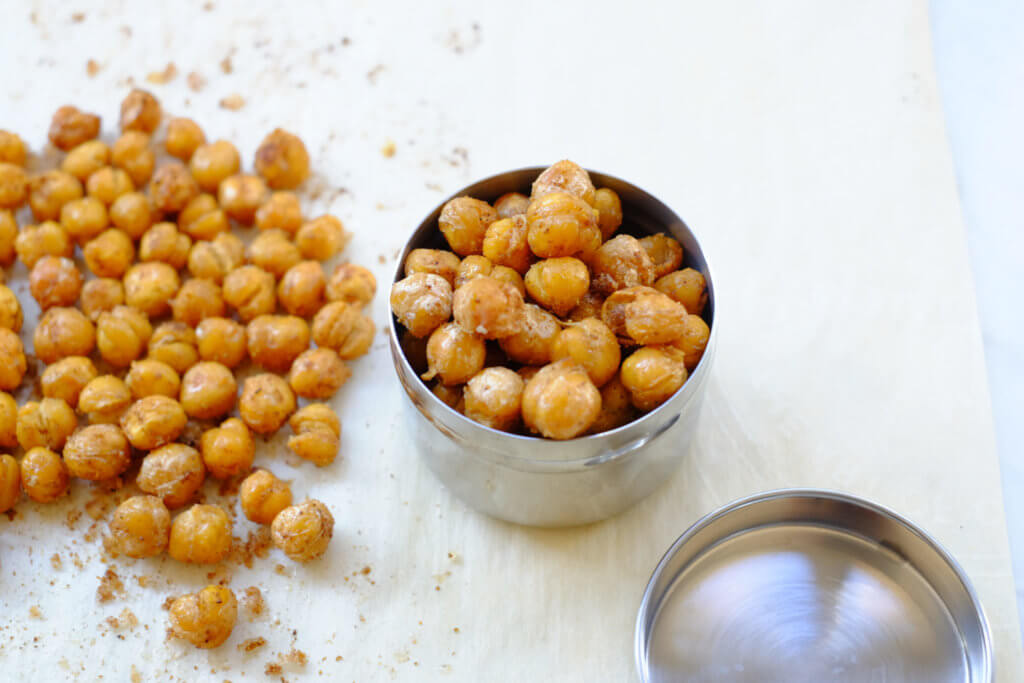
Serves 8
These roasted chickpeas are an easy, high fiber snack that is affordable and great for adding to lunchboxes or satisfying hungry kids after school (or while homeschooling). You can adapt the seasonings to whatever your child likes, or make them with just olive oil and a pinch of salt. We like using garam masala as the seasoning for a curried version. An Italian version with sage, oregano, and rosemary is also very tasty.
Ingredients:
- 2 cans of chickpeas (garbanzo beans), 15oz each
- 2 tablespoons olive oil (or other oil of choice)
- ½ teaspoon salt
- ¼ teaspoon cinnamon (optional)
- ½ teaspoon ground cumin (optional)
- ¼ teaspoon chili powder (optional)
Method:
- Preheat the oven to 350°F.
- Drain the cans of chickpeas well, preferably using a small strainer or colander.
- Spread them onto a baking sheet and dry with a clean kitchen towel or paper towels.
- Drizzle the chickpeas with the olive oil, shaking to evenly coat them (or brush them with a basting brush).
- Sprinkle the spices and salt over the chickpeas.
- Roast in the oven for around 30 minutes, shaking occasionally, until brown and crispy.
- Allow the chickpeas to cool completely before storing. They keep nicely in a paper bag for a day or two, assuming they have been well-roasted. You can also store them in the refrigerator and either eat them cold or re-crisp them in the oven, if desired.
Note: we recommend this snack for older children as they could be a choking hazard for toddlers.
NUTRITION FACTS PER SERVING (about 1/3 cup): Calories 120 Total Fat 5g Protein 5g Total Carbohydrate 14g Dietary Fiber 4g Total Sugars 3g Added Sugars 0g



